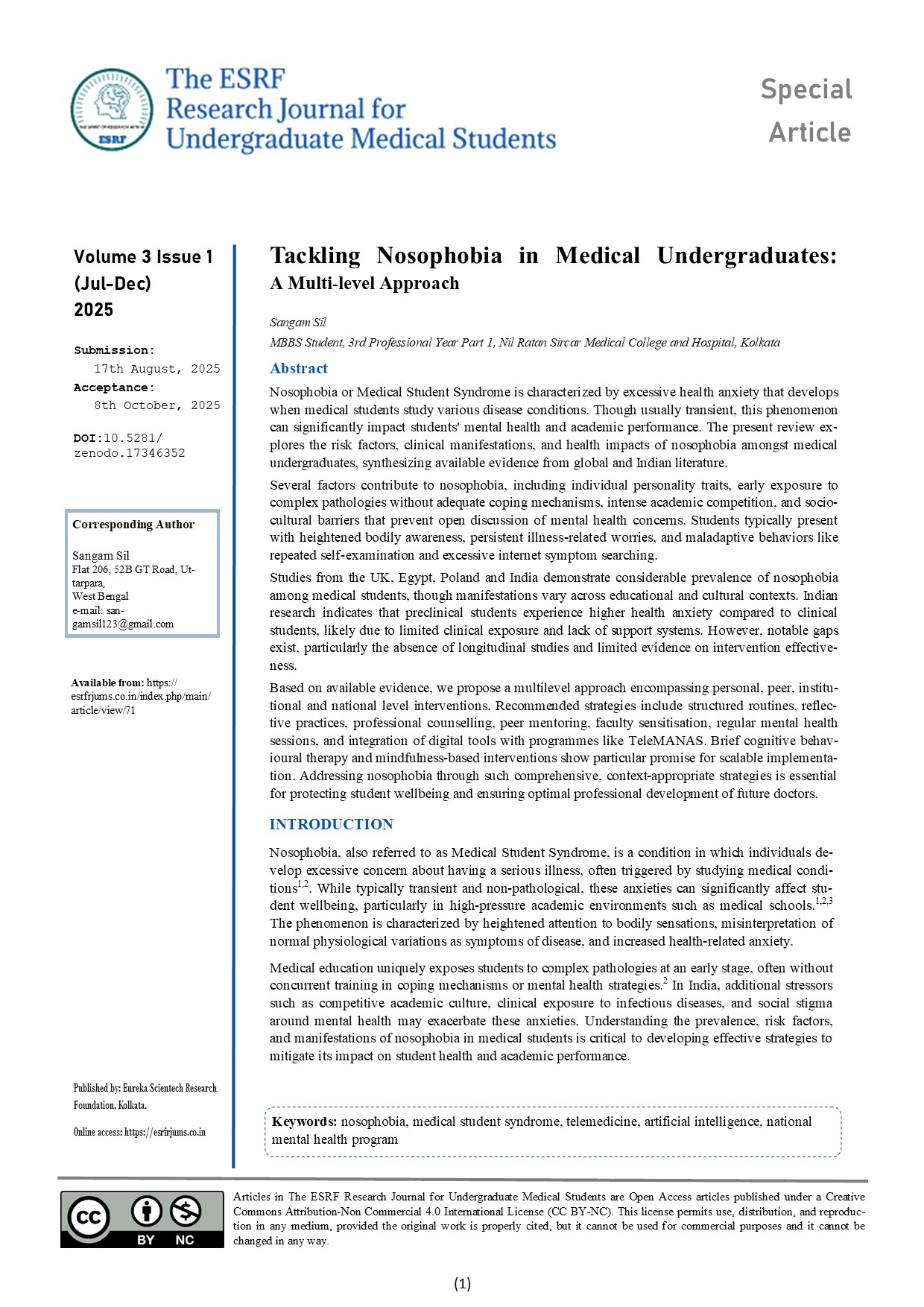Tackling Nosophobia in Medical Undergraduates: A Multi-level Approach
Main Article Content
Abstract
Nosophobia, or Medical Student Syndrome, affects 8-15.7% of medical undergraduates who misinterpret minor symptoms as serious illness. Current evidence shows conflicting findings regarding whether medical students have higher health anxiety than non-medical peers, with personality traits and individual vulnerability appearing more significant than discipline-specific factors. In Indian medical education contexts, academic pressure, clinical exposure to infectious diseases, and cultural stigma around mental health expression intensify these anxieties. This essay proposes a four-tiered intervention framework: personal-level strategies (structured routines, journaling, professional counselling), peer-level support (mentoring programs), institutional measures (early orientation, screening, faculty training, confidential mental health services), and national initiatives (mHealth applications, brief CBT integration, AI-assisted peer-support platforms). Current research limitations include predominantly cross-sectional designs and lack of intervention effectiveness studies specifically targeting nosophobia. Addressing this phenomenon requires systematic attention through multilevel approaches that acknowledge both individual psychology and systemic factors, moving beyond normalization to create supportive educational environments.
Downloads
Article Details
Section

This work is licensed under a Creative Commons Attribution-NonCommercial 4.0 International License.

This article is licensed under Creative Commons Attribution-NonCommercial 4.0
All terms of the license can be found here





